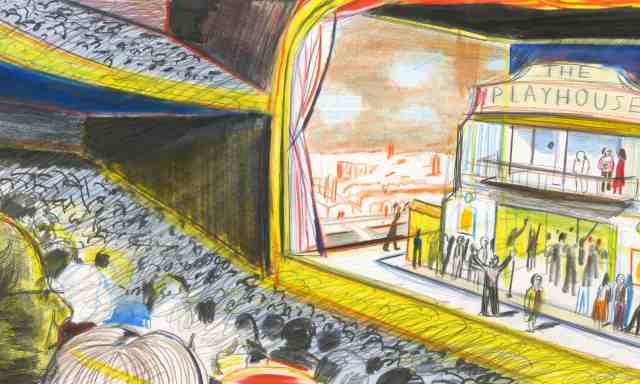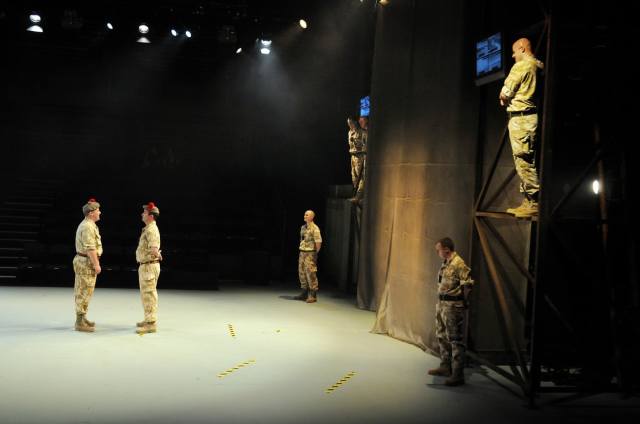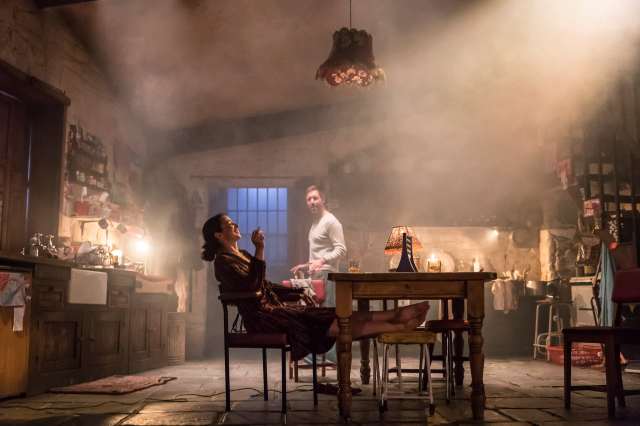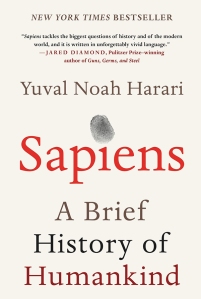What would the ideal theatre look like? As designers of venue buildings it is a question we often ask ourselves. We ask ourselves the big questions, like how would an ideal building engage with the local community and how would foyers help with the visitor experience. And more than this, we spend time making technical drawings telling architects and other designers what ideal parts of theatres look like: perfect lighting bridges, control rooms, dressing rooms etc.
But of course there is no single answer, no single ‘ideal’. The design of a new venue building responds to a complex series of factors: at one end the big questions about what types of performance will be hosted and what audience capacity is required for the business plan, through technical preferences like flying systems, and at the other end a myriad of subtler factors, like site boundaries having knock-on effects on shape of the auditorium.
Similarly, there are no single ‘ideals’ when it comes to areas like venue accessibility. There is no such thing as ‘perfect accessibility’ – for example, large white walls in the foyers can be disorientating for people who are partially-sighted, but good for comprehension of those using sign language. We can’t design an ‘ideal’ theatre – we can only anticipate as many scenarios as possible and design a building that lets its users adapt it as required.
So I was interested to recently come across David Hare’s opinion on what his ideal theatre would look like. It is, at least in part, an eloquent manifesto on the current state of theatre and very much worth reading. I had expected a playwright’s opinions on venue nirvana to be at a wildly different end of the spectrum to my insight from practical experience of the process of designing a building. Instead, I was surprised, relieved and perhaps even a little excited that many of Hare’s ideal features matched the ones we often discuss (OK – not so excited that it didn’t take me over two months to get around to writing a blog post about it).

There are some features that would be difficult for anyone to argue with. The location of the venue in the middle of an actual community who can take pride in having local culture; it would not bear the responsibility of establishing a new cultural district. The theatre would exist for its own sake; for its audiences to enjoy performances. It would cheer everyone up. It would not need corporate sponsorship and the coercions this brings. It would be funded by a state that understands the importance of culture and it would be able to tour a lot of work as a result. It would have a school attached to train the next generations.
Hare would ensure that the theatre is staffed by people who actually go to the theatre, and will work towards what happens on stage. As someone who has toured theatre shows, this resonates. There is nothing more depressing than arriving at a receiving house in an unknown corner of the country on a damp Monday morning to meet (i) a technical team determined to tell you the million ways your show won’t work and (ii) a marketing department who have never heard of your show.
It would have shared bars and restaurants, so that the public could mix with the actors and creatives. I think this is a great idea from a few of my experiences as both an audience and creative: some memorable experiences such as an impromptu post-show conversation with the cast of National Theatre of Scotland’s seminal Black Watch . Alternatively, from a creative’s point of view, the benefits of overhearing unmoderated audience opinion is incredibly useful.

So does Hare give us anything to disagree with? Well, his ideal theatre is for new writing only. It has a writer’s room, and regularly holds workshops and readings. It rarely allows for other art-forms: “It will use dance and music judiciously, as a way of reinforcing its own effects, but never to obliterate word and image”. It assumes an autocracy where the writers are in charge; it doesn’t allow for other ways of creating works such as devising. It doesn’t open itself up to the community for other uses.
We can forgive Hare for this – he is a writer, after all. If we allow ourselves to move further from a realisable ideal that might inform how we actually go about designing venues, perhaps there is no need for the venue to be multipurpose. There are perhaps separate auditoria dotted around the community, one for musical theatre, one for dance and so on. There would be an imaginary population with an insatiable appetite for performance, with no competition between the venues for audience.

So perhaps the oddest choice, given this imaginary state-funded world where all shows sell out, is that he requires the venue to seat a large number (inferring perhaps around 800), the primary reason being that “a playwright needs to live”. He suggests that for some writers such as Jez Butterworth, “the complex response of a large audience enriches the experience.” Having recently seen Butterworth’s The Ferryman at the Gielgud (968 seats), I’m not sure I agree. It was a great piece, but I felt removed, and wonder how much more impact it would have had before it moved from the Royal Court (465). The significant void between me and the protagonists was a barrier that the writing alone could not overcome.
This might be a controversial thing to say, but I’m not sure I’ve ever been able to fully engage with a performance in a venue that seats over 500. It seems, to me, to be some sort of magic number above which the audience is no longer behaving as single community. Above which the performer is no longer talking directly to me. OK, so it depends on the design of the venue and it is certainly possible for venues under that number to give a poor experience. But above 500, it’s not just the physical space that becomes unwieldy: there’s something in the social structure of the audience itself that falls apart. It’s more complex than Hare’s assertion that “people brought up in a world of film and television expect to be close to the action.”

Get down to an auditorium of 150 seats, on the other hand, and the audience is a different body again. Yes you can see the sweat, smell the adrenaline and look through the eyes into the souls of the performers. But it’s also that an audience of 150 has a different behaviour. There is more onus on you, as a member of the audience of this size, to respond to the action. In his book Sapiens, the social historian Yuval Noah Harari suggests that humans are hardwired to work in communities of up to 150. This can be witnessed in social structures such as commercial companies. Could it be true for audiences?
So what does all that mean for our ideal venue, in this world where a business case isn’t required? Well, for me I think it’s actually an ideal collection of small venues. None seating more than 150.

Pingback: Honesty is the best policy in theatre design – Theatre Elements